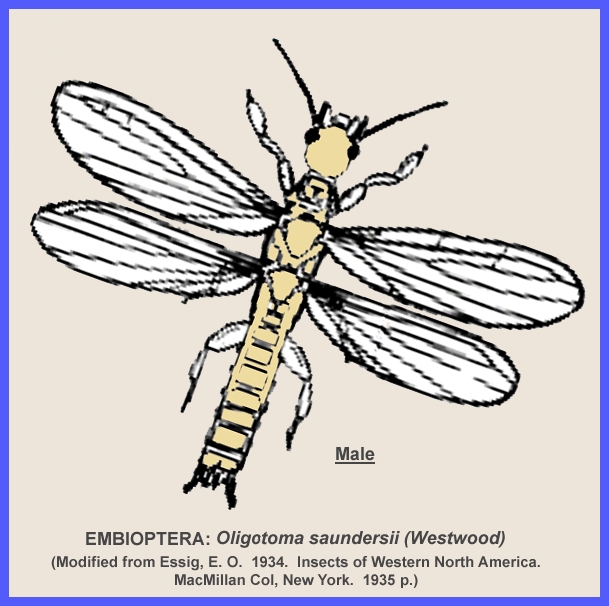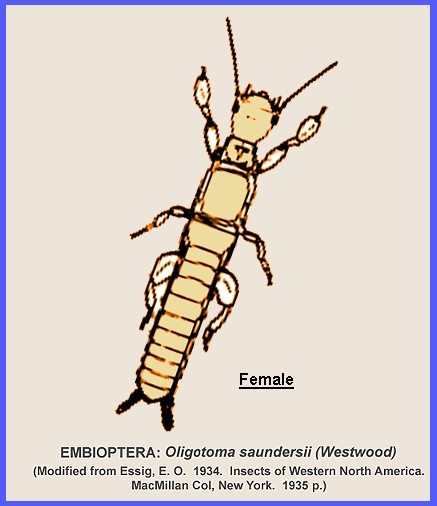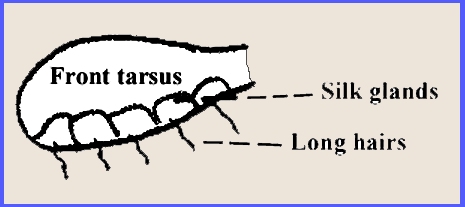File:
<enbioptera.htm> Indexes: < (Entomology), (Invertebrates), (General
Index)> <Invertebrate Bibliography> <Glossary> <Site Description>
< Home>
|
Entomology: EMBIOPTERA 1 Kingdom: Animalia, Phylum: Arthropoda Subphylum: Hexapoda: Class: Insecta: Order: Embioptera (Contact) Please CLICK on underlined
categories to view and on included illustrations to enlarge: Depress
Ctrl/F to search for subject matter:
General
Summary of Embioptera Embioptera are the "web spinners"
that occur in forest litter in mostly tropical and subtropical regions. They are small cylindrical insects with
elongated and flattened bodies. They
have two pairs of similar wings with reduced venation. The females are apterous, while their
cerci are 2-jointed. Males are either
winged or apterous and their cerci are asymmetrical. Metamorphosis is not present in females but
occurs only slightly in males. Their common name is derived from
their ability to spin silken webs.
They have a web spinning apparatus on the front tarsus. The webs are spun in tunnels, which serve
as protection and as pathways for foraging.
They are long and slender insects with short legs that enable them to
run backwards and forwards. Many
species are gregarious, living in tunnels formed of silk produced by tarsal
glands as in Embia major of India (Borradaile &
Potts, 1958). ------------------------------------------- Details of Insect Taxonomic Groups Examples of beneficial species
occur in almost every insect order, and considerable information on
morphology and habits has been assembled.
Therefore, the principal groups of insect parasitoids and predators provide
details that refer to the entire class Insecta. These details are available at <taxnames.htm>. ============== |



